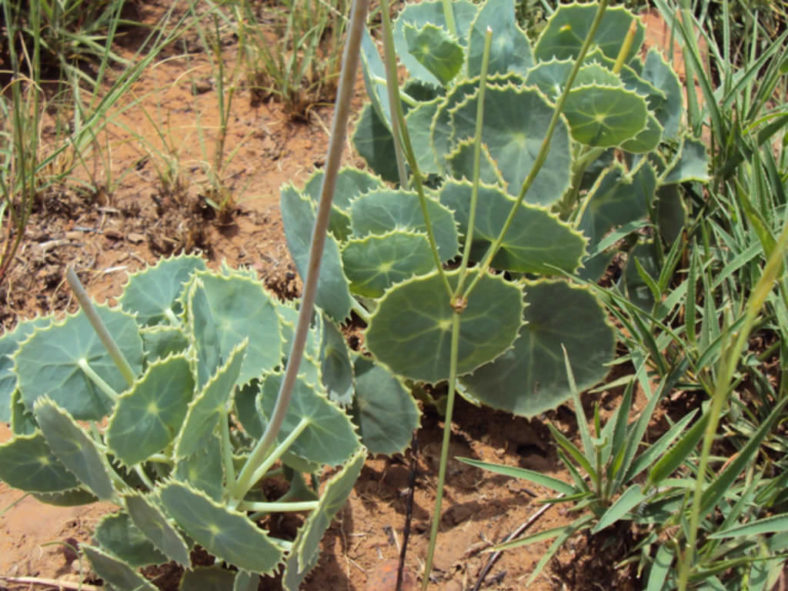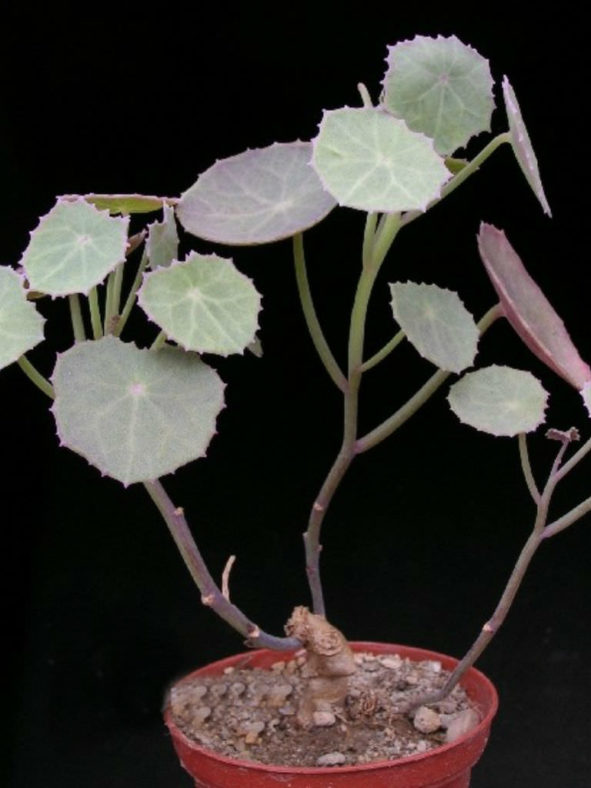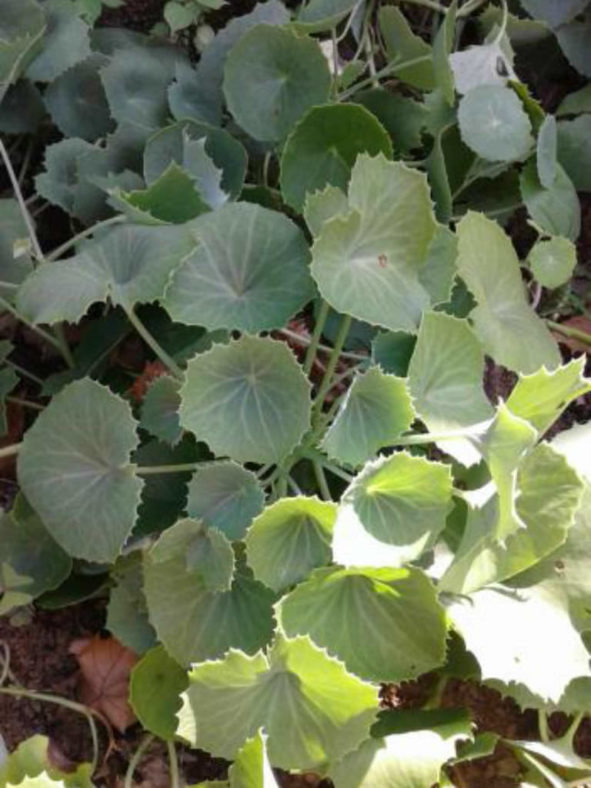Scientific Name
Senecio oxyriifolius DC.
Common Name(s)
False Nasturtium
Synonym(s)
Senecio orbicularis, Senecio peltatus, Senecio peltiformis, Senecio subpeltatus
Scientific Classification
Family: Asteraceae
Subfamily: Asteroideae
Tribe: Senecioneae
Subtribe: Senecioninae
Genus: Senecio
Etymology
The specific epithet "oxyriifolius" (pronounced "ok-seer-ee-FOH-lee-us") means "having leaves like those of Oxyria". It refers to the leaves of this species, which resemble those of plants in the genus Oxyria.
Origin
Senecio oxyriifolius is native to South Africa, Eswatini, Mozambique, Zimbabwe, Malawi, Zambia, Angola, the Democratic Republic of the Congo, and Tanzania. It grows in grassland, particularly among rock outcrops, from near sea level up to 7,550 feet (2,300 m).
Description
Senecio oxyriifolius is a succulent plant with a creeping tuberous rhizome and erect, fleshy stems with leaves crowded towards the base. The leaves are fleshy or somewhat fleshy, with a rubbery texture, orbicular to deltoid, and serrated margins, measuring up to 3.6 inches (9 cm) long and wide. They are pale green or grey-green, with green-yellow veins, and attached to the stem by a petiole that can reach up to 6 inches (15 cm) in length.
Each stem ends in a tall, slender, branched flowering stem topped with a lax panicle of bright yellow discoid flower heads. This plant is a prolific bloomer, producing abundant flowers in spring and summer.
Senecio oxyriifolius is very similar to and often confused with Senecio tropaeolifolius.

Subspecies of Senecio oxyriifolius
- Senecio oxyriifolius subsp. milanjianus
- Senecio oxyriifolius subsp. oxyriifolius
- Senecio oxyriifolius subsp. tropaeolifolius
How to Grow and Care for Senecio oxyriifolius
Hardiness: USDA hardiness zones 9b to 11b: from 25°F (-3.9°C) to 50°F (10°C).
Established Senecios are extremely drought-tolerant. They need some water during the summer, but do not leave the soil wet for prolonged periods. Allow the soil to dry out between waterings in winter when they are somewhat dormant. Since they are growing in sandy soil, they need nutrients replenished. Fertilize annually, but lightly. Too much fertilizer can cause excessive leggy growth.
Taller varieties can get floppy. You can prune them back to where the stem is firm in early spring. You can even root the cuttings.
Plants can be divided or repotted in early spring. If you are growing them in containers, they enjoy spending the summer outdoors. Wait until there is no danger of frost and move them back indoors in the fall.
Senecio can be grown from either seed or cuttings. Seeds prefer warm temperatures and constant moisture to germinate. Cuttings are easier and faster. Cut during the growing season, from early spring to fall. Root them in sandy soil, in containers.
Learn more at How to Grow and Care for Senecio.
Links
- Back to genus Senecio
- Succupedia: Browse succulents by Scientific Name, Common Name, Genus, Family, USDA Hardiness Zone, Origin, or cacti by Genus
Photo Gallery
Click on a photo to see a larger version.


